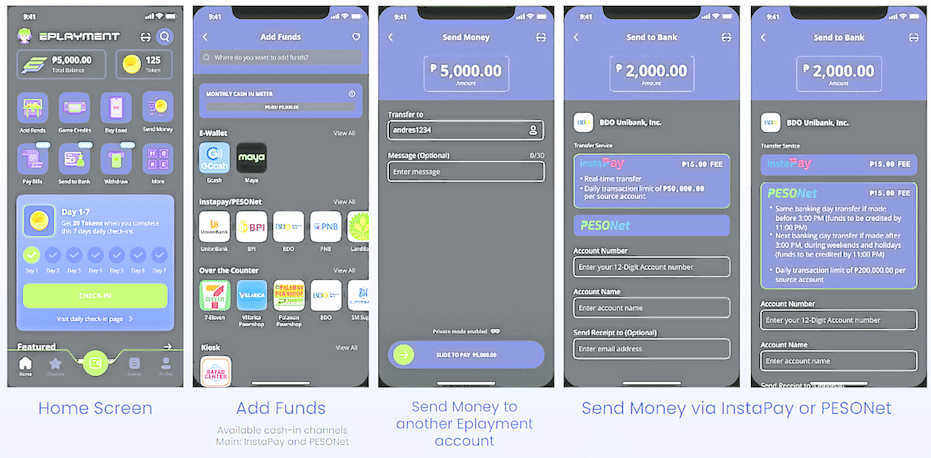Fueling the creative economy

Karlos Naidas
Social media has become an effective and lucrative platform for content creators to collaborate with brands to foster consumer awareness and loyalty.
Content creators play an invaluable role in the expanding web of the creator economy, the software-facilitated ecosystem that allows content creators and influencers to turn their creations into income-generating activity.
It encompasses everything within the world of e-commerce and social media, digital advertising and marketing firms. It has gotten so big that Goldman Sachs expects it to double its size to $480 billion by 2027.
Karlos Naidas, the 34-year-old CEO of content aggregator platform PIXEL by Eplayment, says the growth of the creative economy in the Philippines gained more traction during the pandemic.
“The substantial growth in the Philippine creator economy has been evident in the sizable increase of content creators … Not only does this sector provide an avenue for creators to express themselves, but it is also a revenue-generating gig as there are many ways to earn in content creation,” he explains.

Juan Lorenzo Marco —CONTRIBUTED PHOTOS
Such is the case of Juan Lorenzo Marco, 34, who started dabbling in content creation during the pandemic. As marketing and platforms manager at the Cultural Center of the Philippines, he was tasked to create a new space to share art even during lockdown.
As his research led him to the world of streaming, he got fascinated with the infinite possibilities. As an avid gamer, he started livestreaming while playing Mobile Legends. Over time, he built a community of followers.
Marco, who goes by the username Uncle JU, is now a full-time content creator with nearly 70,000 followers across all social media platforms. He says that brand collaborations and events such as “shoutcasting” gaming tournaments have been a steady source of revenue.
He attributes his success to his participation in Project Upload, Eplayment’s first creator-centric event in 2023 that was designed to provide content creators insights into the industry.
“There were other creators who were also invited and they tackled other vital topics. It also became an avenue for creators like me to collaborate with others who share the same passion,” he recounts.
Moreover, Eplayment has played a major role in monetizing Marco’s online presence. He uses both platforms—Eplayment and PIXEL—to earn more from tips and donations from viewers and supporters.
You can feel the love for aspiring creators from this organization, he says. “They have been part of my milestones. They helped me grow my connections and made me believe that I have a future with this industry,” he adds.

Marco aka Uncle JU is all dressed up for cosplay.
Challenges and opportunities
The creator economy, Naidas explains, has led to unique opportunities for brands and consumers to build meaningful connections. “For brands, content creation is vital as it helps build their identity further by appearing more organic and personal through influencers or creators that engage with audiences on their behalf.”
“Quality content can influence purchases as they produce informative and engaging content that can assist potential customers in making informed decisions, ultimately leading to sales conversions for consumer brands,” he explains in an email interview.
According to Naidas, the most common source of income of creators is brand partnership, whereby they charge talent or posting fees.
As the ecosystem continues to thrive, Naidas identifies a pain point in the monetization process of content creation: creators often encounter a snag in accessing traditional financial services. An “organic and integrated platform that will serve as both the payment gateway and processor” is deemed necessary to help creators access their earnings in real time.
Eplayment seeks to fill the gap by developing a payment gateway for content creators. Eplayment was first established in 2019 for the e-sports community as a producer of small-scale content features for up-and-coming gamers. From an e-wallet tailored to the needs of gamers, it has become a channel for creators to thrive.
Naidas says PIXEL offers a comprehensive creator suite customized to deliver seamless payment tools and fast banking solutions. To speed up content monetization, it offers real-time payouts, direct payments from fans, customizable subscription system and loan opportunities.
Users can send “PIX” or the in-app credits as donations to their favorite creators. Creators, in turn, can easily cash out credits through the Eplayment app and other supported e-wallets.

MOBILE-READY Screenshot of Eplayment dashboard.
Community-building
Together, Eplayment and PIXEL offer creator connect programs wherein a diverse set of community-building activities are collated for creators and fans alike to “foster new relationships and share knowledge and expertise on the craft.”
“We nurture our community with encouraging bits of advice on being true to one’s branding, fostering a community that will support them and of course, stimulating creative freedom, which is shared from one creator to another,” Naidas says.
In addition, PIXEL enables its creators to enhance audience reach through content aggregators. Naidas describes content aggregators as “pivotal players in the creator economy [by] simplifying the process of putting out one’s content to the broad market by having a centralized location.”
“The user-friendly interface allows seamless navigation, streamlining the content creation journey and enabling users to prioritize their creativity without distractions,” he adds.
By capitalizing on the growing volume and diversity of content generated by creators, he says aggregators can leverage user engagement to drive revenue growth for the business.
Naidas says that stiff competition in the creative economy has driven more creators to use technology to help maximize the engagement with the audience after posting. Artificial intelligence enables creators to keep tabs on trends and easily adjust to the algorithm of their online activity, he says.
PIXEL now has a community of 3,873 creators. But Naidas wants to bring in more creators under his wing. “PIXEL seeks to accommodate both starting and veteran creators, ensuring that newbies can ease into content creation and more established creators continue to earn sufficient revenue,” he says.
They earn through transaction fees that are applied when users utilize the Eplayment wallet and PIXEL. There is a flat fee of 5 percent on all transactions across PIXEL’s available features.
Eplayment’s goal is to attract 40,000 users, whether fans or creators, on PIXEL by 2025. Naidas is also looking to expand overseas to reach Filipinos who wish to have a unique platform to share their content.
